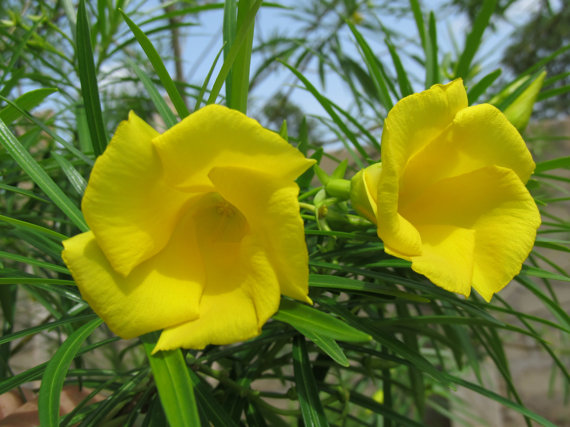
Feeding Your Tropical Plants Organically
December 21, 2018
One species, many names
This plant is often called ‘Yellow Oleander’ however the current scientific name is Cascabela thevetia. But many in the plant world still call it by its former classification. Here’s a quick rundown of what up:
- Cascabela thevetia is the current botanical name
- Thevetia peruviana is the same plant—this is the former scientific name..
- Cascabel thevetia is a variation of the name, derived from the Spanish word cascabel, meaning “small bell” or “rattle,” maybe referring to it’s toxic nature… it’s a spelling error that’s easy to make if you know Spanish.
Common names
The plant goes by several common names. It doesn’t have too many common names as it is a relatively rare plant.
| Common Name | Notes |
| Yellow Oleander | Most widely used, especially in English, even though there are varieties of Oleander that are yellow – they just aren’t as yellow as this plant. Buttery yellow! |
| Be-Still Tree | Refers to its toxic nature |
| Lucky Nut | Refers to the seed’s appearance, but let’s be honest, this is a terrible name! If you eat the seed, you will not be lucky in any way. Do not eat this plant! And let’s all agree to stop calling it by this name. Can’t we all get along here? |
| Snakebite Tree | I just made it up. But some idiot will think you should apply it to snakebite wounds… naming things is hard! |
| Chapéu-de-Napoleão | Portuguese name meaning “Napoleon’s hat”. Can this name prevent people from wanting to eat it? |
Despite the name “Yellow Oleander,” it is not the same species as Nerium oleander, though both belong to the Apocynaceae family and share toxic properties.
So in short: it’s one species with multiple names, not two different plants.
Rare Indeed
You can be the only one on the block with this rare, exotic wonder:
